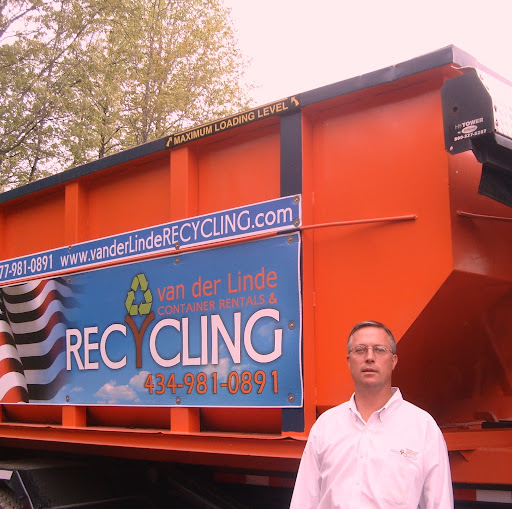David A Holcomb
age ~58
from Bristol, TN
- Also known as:
-
- Davida Holcomb
- David Holcom
- Phone and address:
- 361 Belmont Dr APT 2, Bristol, TN 37620
David Holcomb Phones & Addresses
- 361 Belmont Dr APT 2, Bristol, TN 37620
- Blountville, TN
- New York, NY
- 1429 Mccroskey Ave, Knoxville, TN 37917 • (865)6339055
- Bronx, NY
- Cosby, TN
Work
-
Company:Nhc healthcare - Bristol, VAApr 2011
-
Position:Cook.
Education
-
School / High School:Northeast State Community College- Blountville, TN2010
-
Specialities:Current in University Paralel/History
Skills
Inventory management • some managerial experience • good people skills.Good cooking backgrou...
Images
Real Estate Brokers

David Holcomb David Holcomb
view sourceLicense Records
David Holcomb
License #:
01615-C - Expired
Issued Date:
Jul 28, 1992
Expiration Date:
Jun 30, 2001
Type:
Licensed Clinical Social Worker
License #:
01373-A - Expired
Issued Date:
May 15, 1991
Type:
Licensed Advanced Social Worker
David S Holcomb Ii
License #:
2705076686 - Expired
Category:
Contractor
Issued Date:
May 14, 2003
Expiration Date:
May 31, 2005
Type:
Class C
David B Holcomb
License #:
E037158 - Expired
Category:
Emergency medical services
Issued Date:
Feb 23, 2010
Expiration Date:
Mar 31, 2016
Type:
Los Angeles City FD
Name / Title
Company / Classification
Phones & Addresses
JustWork Economic Initiative
JustCatering. JustPotters. JustRenos
Employment Service
JustCatering. JustPotters. JustRenos
Employment Service
1803E 1st Ave E, Vancouver, BC V5N 1B2
(604)7342104
(604)7342104
Principal
Parks Mill
Eating Place
Eating Place
21405 Park Ml Rd, Abingdon, VA 24211
(276)6289191
(276)6289191
KIDSPORT LTD
BUCKEYE SWIM SCHOOL, LLC
JustWork Economic Initiative
Employment Service
Employment Service
(604)7342104
Us Patents
-
Monolithically Compatible Impedance Measurement
view source -
US Patent:6456096, Sep 24, 2002
-
Filed:May 8, 2000
-
Appl. No.:09/566764
-
Inventors:Milton Nance Ericson - Knoxville TN
David Eugene Holcomb - Oak Ridge TN -
Assignee:UT-Battelle, LLC - Oak Ridge TN
-
International Classification:G01R 2708
-
US Classification:324707, 324698, 324685, 324686, 324691, 324654, 324 7616, 257528, 257540
-
Abstract:A monolithic sensor includes a reference channel and at least one sensing channel. Each sensing channel has an oscillator and a counter driven by the oscillator. The reference channel and the at least one sensing channel being formed integrally with a substrate and intimately nested with one another on the substrate. Thus, the oscillator and the counter have matched component values and temperature coefficients. A frequency determining component of the sensing oscillator is formed integrally with the substrate and has an impedance parameter which varies with an environmental parameter to be measured by the sensor. A gating control is responsive to an output signal generated by the reference channel, for terminating counting in the at least one sensing channel at an output count, whereby the output count is indicative of the environmental parameter, and successive ones of the output counts are indicative of changes in the environmental parameter.
-
Torsional Ultrasonic Wave Based Level Measurement System
view source -
US Patent:8218396, Jul 10, 2012
-
Filed:Mar 16, 2010
-
Appl. No.:12/724818
-
Inventors:David E. Holcomb - Oak Ridge TN, US
Roger A. Kisner - Knoxville TN, US -
Assignee:UT-Battelle, LLC - Oak Ridge TN
-
International Classification:G01S 15/00
G01F 23/00 -
US Classification:367 99, 367908, 73290 V
-
Abstract:A level measurement system suitable for use in a high temperature and pressure environment to measure the level of coolant fluid within the environment, the system including a volume of coolant fluid located in a coolant region of the high temperature and pressure environment and having a level therein; an ultrasonic waveguide blade that is positioned within the desired coolant region of the high temperature and pressure environment; a magnetostrictive electrical assembly located within the high temperature and pressure environment and configured to operate in the environment and cooperate with the waveguide blade to launch and receive ultrasonic waves; and an external signal processing system located outside of the high temperature and pressure environment and configured for communicating with the electrical assembly located within the high temperature and pressure environment.
-
High Efficiency Proportional Neutron Detector With Solid Liner Internal Structures
view source -
US Patent:20120223242, Sep 6, 2012
-
Filed:Feb 29, 2012
-
Appl. No.:13/408343
-
Inventors:Gilbert M. Brown - Knoxville TN, US
David Eugene Holcomb - Oak Ridge TN, US
Roger Allen Kisner - Knoxville TN, US -
Assignee:UT-BATTELLE, LLC - Oak Ridge TN
-
International Classification:G01T 3/00
-
US Classification:250391, 25039001
-
Abstract:A tube-style neutron detector, a panel-style neutron detector incorporating a plurality of tube-style neutron detectors, and a panel-style neutron detector including a plurality of anode wires are provided. A plurality of channels is provided in a neutron detector such that each channel has an inner surface of a coating layer including a neutron-absorbing material. A wire anode is provided at end of each channel so that electrons generated by a charged daughter particle generated by a neutron are collected to detect a neutron-matter interaction. Moderator units can be incorporated into a neutron detector to provide improved detection efficiencies and/or to determine neutron energy spectrum. Gas-based proportional response from the neutron detectors can be employed for special nuclear material (SNM) detection. This neutron detector can provide similar performance to He-based detectors without requiring He and without containing toxic, flammable, or high-pressure materials.
-
Method For Facilitating The Introduction Of Material Into Cells
view source -
US Patent:60603151, May 9, 2000
-
Filed:Sep 14, 1998
-
Appl. No.:9/152926
-
Inventors:David E. Holcomb - Oak Ridge TN
Timothy E. McKnight - Greenback TN -
Assignee:Lockheed Martin Energy Research Corporation - Oak Ridge TN
-
International Classification:C12N 1500
C12N 1585
C12Q 168 -
US Classification:435446
-
Abstract:The present invention is a method for creating a localized disruption within a boundary of a cell or structure by exposing a boundary of a cell or structure to a set of energetically charged particles while regulating the energy of the charged particles so that the charged particles have an amount of kinetic energy sufficient to create a localized disruption within an area of the boundary of the cell or structure, then upon creation of the localized disruption, the amount of kinetic energy decreases to an amount insufficient to create further damage within the cell or structure beyond the boundary. The present invention is also a method for facilitating the introduction of a material into a cell or structure using the same methodology then further exciting the area of the boundary of the cell or structure where the localized disruption was created so to create a localized temporary opening within the boundary then further introducing the material through the temporary opening into the cell or structure.
-
Material Forming Apparatus Using A Directed Droplet Stream
view source -
US Patent:60276991, Feb 22, 2000
-
Filed:Jul 28, 1997
-
Appl. No.:8/901711
-
Inventors:David E. Holcomb - Oak Ridge TN
Srinath Viswanathan - Knoxville TN
Craig A. Blue - Knoxville TN
John B. Wilgen - Oak Ridge TN -
Assignee:Lockheed Martin Energy Research Corp. - Oak Ridge TN
-
International Classification:B01J 1908
B01J 1912 -
US Classification:42218604
-
Abstract:Systems and methods are described for rapidly forming precision metallic and intermetallic alloy net shape parts directly from liquid metal droplets. A directed droplet deposition apparatus includes a crucible with an orifice for producing a jet of material, a jet destabilizer, a charging structure, a deflector system, and an impact zone. The systems and methods provide advantages in that fully dense, microstructurally controlled parts can be fabricated at moderate cost.
-
Intermediate Strength Alloys For High Temperature Service In Liquid-Salt Cooled Energy Systems
view source -
US Patent:20150329942, Nov 19, 2015
-
Filed:May 15, 2014
-
Appl. No.:14/277992
-
Inventors:- Oak Ridge TN, US
Dane Francis Wilson - Oak Ridge TN, US
David Eugene Holcomb - Oak Ridge TN, US -
International Classification:C22C 19/05
-
Abstract:An alloy is composed essentially of, in terms of weight percent: 6 to 8.5 Cr, 5.5 to 13.5 Mo, 0.4 to 7.5 W, 1 to 2 Ti, 0.7 to 0.85 Mn, 0.05 to 0.3 Al, 0.08 to 0.5 C, 0 to 1 Nb, with the balance Ni, the alloy being characterized by, at 850 C., a yield strength of at least 25 Ksi, a tensile strength of at least 30 Ksi, a creep rupture life at 12 Ksi of at least 45 hours, and a corrosion rate, expressed in weight loss [g/(cmsec)]10during a 1000 hour immersion in liquid FLiNaK at 850 C., in the range of 6 to 39.
-
Liquid Salt Environment Stress-Rupture Testing
view source -
US Patent:20150330883, Nov 19, 2015
-
Filed:May 14, 2014
-
Appl. No.:14/277274
-
Inventors:- Oak Ridge TN, US
David E. Holcomb - Oak Ridge TN, US
Govindarajan Muralidharan - Knoxville TN, US
Dane F. Wilson - Oak Ridge TN, US -
Assignee:UT-Battelle, LLC - Oak Ridge TN
-
International Classification:G01N 3/08
-
Abstract:Disclosed herein are systems, devices and methods for stress-rupture testing selected materials within a high-temperature liquid salt environment. Exemplary testing systems include a load train for holding a test specimen within a heated inert gas vessel. A thermal break included in the load train can thermally insulate a load cell positioned along the load train within the inert gas vessel. The test specimen can include a cylindrical gage portion having an internal void filled with a molten salt during stress-rupture testing. The gage portion can have an inner surface area to volume ratio of greater than 20 to maximize the corrosive effect of the molten salt on the specimen material during testing. Also disclosed are methods of making a salt ingot for placement within the test specimen.
-
Intermediate Strength Alloys For High Temperature Service In Liquid-Salt Cooled Energy Systems
view source -
US Patent:20150197832, Jul 16, 2015
-
Filed:Jan 10, 2014
-
Appl. No.:14/152215
-
Inventors:- Oak Ridge TN, US
Dane Francis Wilson - Oak Ridge TN, US
David Eugene Holcomb - Oak Ridge TN, US -
International Classification:C22C 19/05
-
Abstract:An alloy consists essentially of, in terms of weight percent: 6 to 8.5 Cr, 5.5 to 13.5 Mo, 0.4 to 7.5 W, 1 to 2 Ti, 0.7 to 0.85 Mn, 0.05 to 0.3 Al, up to to 0.1 Co, 0.08 to 0.5 C, 1 to 5 Ta, 1 to 4 Nb, 1 to 3 Hf, balance Ni. The alloy is characterized by, at 850 C., a yield strength of at least 36 Ksi, a tensile strength of at least 40 Ksi, a creep rupture life at 12 Ksi of at least 72.1 hours, and a corrosion rate, expressed in weight loss [g/(cm2sec)]×10during a 1000 hour immersion in liquid FLiNaK at 850 C., in the range of 8 to 25.
Resumes

David Holcomb Bristol, TN
view sourceWork:
NHC Healthcare
Bristol, VA
Apr 2011 to Sep 2013
Cook. Burger King
Bristol, VA
Mar 2009 to May 2010
Cook DaVinci's Pizza
Knoxville, TN
Aug 2005 to Jul 2008
Cook/Cashier Pasta Trio Italian Restaurant
Knoxville, TN
Mar 2002 to Apr 2005
Chef/Prep Cook
Bristol, VA
Apr 2011 to Sep 2013
Cook. Burger King
Bristol, VA
Mar 2009 to May 2010
Cook DaVinci's Pizza
Knoxville, TN
Aug 2005 to Jul 2008
Cook/Cashier Pasta Trio Italian Restaurant
Knoxville, TN
Mar 2002 to Apr 2005
Chef/Prep Cook
Education:
Northeast State Community College
Blountville, TN
2010 to 2015
Current in University Paralel/History Tennessee High School
Bristol, TN
1983 to 1986
Diploma in General Studies/History
Blountville, TN
2010 to 2015
Current in University Paralel/History Tennessee High School
Bristol, TN
1983 to 1986
Diploma in General Studies/History
Skills:
Inventory management,some managerial experience,good people skills.Good cooking background.
Medicine Doctors

David J. Holcomb
view sourceSpecialties:
Plastic Surgery
Work:
Holcomb Kreithen Plastic Surgery
1 S School Ave STE 800, Sarasota, FL 34237
(941)3658679 (phone), (941)3658680 (fax)
1 S School Ave STE 800, Sarasota, FL 34237
(941)3658679 (phone), (941)3658680 (fax)
Languages:
English
French
Spanish
French
Spanish
Description:
Dr. Holcomb works in Sarasota, FL and specializes in Plastic Surgery. Dr. Holcomb is affiliated with Lakewood Ranch Medical Center.
Wikipedia References

David Holcomb
Work:
Position:
Senator
Skills & Activities:
Preference:
Republican

David Holcomb
Youtube
Googleplus

David Holcomb
Work:
Dell KACE - Software Development Senior Engineer
Cymphonix - Sr. Software Engineer (2008-2010)
Quest Software - Sr. Software Engineer (2006-2008)
Netopia - Sr. Software Engineer (2000-2006)
Ameritech Library Services - Sr. Software Enginner (1996-2000)
Cymphonix - Sr. Software Engineer (2008-2010)
Quest Software - Sr. Software Engineer (2006-2008)
Netopia - Sr. Software Engineer (2000-2006)
Ameritech Library Services - Sr. Software Enginner (1996-2000)
Education:
University of California, Los Angeles - Math/Computer Science
Bragging Rights:
Graduated Kindergarten with top honors!

David Holcomb
Work:
Van der Linde Recycling and Container Rentals - Sales Director
Rudco Products - Regional Sales Manager--Va., Maryland, West Va. (2-6)
BFI Waste Systems - Major Account Executive (2-2)
Purgo, Inc. Environmental Services - Sales Executive (2)
Rudco Products - Regional Sales Manager--Va., Maryland, West Va. (2-6)
BFI Waste Systems - Major Account Executive (2-2)
Purgo, Inc. Environmental Services - Sales Executive (2)
Education:
Randolph-macon College - BA-Biology
About:
Sales Director - van der Linde Recycling 434-906-3536 office-434-589-1948 F--434-589-1054 E-mail: [email protected]...
Bragging Rights:
Provide Recycling of Construction Debris and Municipal Solid Waste. Roll-off Service, Recycled Gravel, Mulch, Storage Containers, Port-a-Johns, Transfer Stations

David Holcomb
Lived:
Bristol, TN
NYC, Washington D.C. Knoxville, TN.
NYC, Washington D.C. Knoxville, TN.
Work:
Unemployed - Chef, student
Education:
Northeast state tech community college, Pellissippi state community college

David Holcomb
Work:
Carnegie Mellon University - Production Manager (2003)
Pittsburgh Ballet Theatre - Production Manager (1998-2003)
Pittsburgh Ballet Theatre - Production Manager (1998-2003)
Education:
Boston University - Theatrical Lighting Design

David Holcomb
Work:
County of Hillsdale - Director of Information Technology (1998)

David Holcomb
Work:
Quinn Computers

David Holcomb

David Holcomb
Flickr
Myspace
Plaxo

David Holcomb
view sourcePast: A World of Tile, Dex Media, Capital One Auto Finance, Verizon Information Services

David Holcomb
view sourcePittsburgh, PA

David Holcomb
view sourceBells, TN

David Holcomb
view sourceVP / Regional Manager at T T TECHNOLOGIES

David Bo Holcomb
view source
David W Holcomb
view source
David Lee Holcomb
view source
David Lee Holcomb
view source
David Allen Holcomb
view source
Michael David Holcomb
view source
Jody David Holcomb
view source
David Holcomb
view sourceClassmates

David Holcomb
view sourceSchools:
King's Way Christian High School Douglasville GA 1984-1988
Community:
Elliott Bachelor, Matthew Bachelor, Lori Glass, Scott Williams, Tracey Parris

David Holcomb
view sourceSchools:
Monacan High School Richmond VA 1979-1983
Community:
Lynne Dintiman

David Holcomb
view sourceSchools:
King's Way Christian High School Douglasville GA 1984-1988
Community:
Elliott Bachelor, Matthew Bachelor, Lori Glass, Scott Williams, Tracey Parris

David Holcomb
view sourceSchools:
centeral high school Battle Creek MI 1946-1950
Community:
Brandi Iles, Lorna Bell

David Holcomb
view sourceSchools:
Elmwood High School Elmwood WI 1965-1969
Community:
Robert Cramer, Michael Fischer, Margery Robole

David Holcomb
view sourceSchools:
Saint Patrick School Mcewen TN 1980-1986
Community:
Kirk Andersen

David Holcomb
view sourceSchools:
Bay High School Bay St. Louis MS 1964-1968
Community:
Jay Centerbar, Gerald Favre, Scott Ward, Larry Giveans

David Holcomb
view sourceSchools:
J. Allen Couch School Atlanta GA 1961-1966
Community:
Eddie Butler, Robert Rutherford
Get Report for David A Holcomb from Bristol, TN, age ~58













